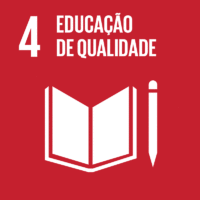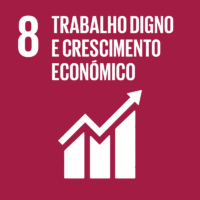Ciência_Iscte
Comunicações
Descrição Detalhada da Comunicação
Implications of new technologies on consumer engagement
Título Evento
AIRSI 2022 Tecnologies 4.0 in Tourism, Services and Marketing
Ano (publicação definitiva)
2022
Língua
Inglês
País
Espanha
Mais Informação
Web of Science®
Esta publicação não está indexada na Web of Science®
Scopus
Esta publicação não está indexada na Scopus
Google Scholar
Esta publicação não está indexada no Google Scholar
Esta publicação não está indexada no Overton
Abstract/Resumo
New technologies will continue to create added values to companies that adapt, as it gives a competitive advantage that significantly influences consumer behavior (Rangaswamy et al., 2020). The customer’s willingness to patronize the services of companies with the internet of things (IoT hereafter) enabled services through electronic channels gives the customer the ‘control’ over the business relationship with the company (Johnson, 2007). The concept of IoT has attracted a lot of attention, largely attributed to its importance due to its considerable internalization in our daily lives (Libai et al., 2020). Consumer engagement (CE hereafter), on the other hand, has equally gained some attention in recent times due to the dynamism in the academic, retail, business (Pansari and Kumar 2017) and practitioners’ landscape (Dessart et al., 2017). With the advent of IoT, there has been a significant shift from human-to-human, human-to-machine, or machine-to-machine interactions (Bulmer et al., 2018).
Academic practitioners in recent times have highlighted several outlooks on the concept of IoT especially as it relates to new technologies, virtual reality, augmented reality, internet of things, artificial intelligence, robotics, drones, and autonomous driving (Pillai et al., 2020; Novak and Hoffman, 2019; Kamble et al., 2019). The (r)evolution in the retail space has been very intense due to its dynamic nature and further accelerated thanks to the recent global pandemic (Kotb and Adel, 2020). Hence, Nguyen and Simkin, (2017)’s clamor for further empirical reviews to examine the implications of IoT for an improved CE. While some researchers identified that the best consumer experience can be generated through the combination of human and technology-based services (Parasuraman et al., 2005; Reinders et al., 2008, 2015), Hoyer et al. (2020) and Rust (2020) further affirms the position of previous researchers in identifying this gap from an empirical standpoint.
The purpose of this paper is to propose an empirical model that can inform studies on the implications of new technologies on CE across different touchpoints in the retail landscape. In other words, will there be an increase in the level of consumer engagement because of machine-to-machine or human-to-machine relationships in retail marketing?
Previous research on IoT and CE have addressed a) the virtual customer environment, which encourages firms to enable innovation and value creation (Nambisan and Baron 2007); b) Kumar et al., (2019) adopted the S-D Logic of Hellebeek et al., (2016) to investigate CE in a service context by focusing on emerging markets; c) Gao and Bai, (2014) understood the significant of first attracting and then retaining IoT customers, established some factors that influenced consumer acceptance of IoT using the technology acceptance model (TAM) as a theoretical base. Other studies also focused on the direction of IoT and connectedness of consumer in a technology enabled world (Ng & Wakenshaw, 2017). Taking into consideration the importance of understanding the impact of IoT and new technologies in retail channels (Dhruv et al., 2017), it is pivotal to understand the influencing factors through a comprehensive empirical study and propose important managerial implications on how retailers and practitioners can further utilize IoT as an important value offering to consumers. This paper adopts a more rational approach by adapting the relationship investment model (RI) by Rusbult (1980).
Conceptual Model
Relationship investment model (RI) (Rusbult, 1980) suggests that the long-term persistence of an individual in a relationship is mediated by the commitment attached to it. The model was originally developed in social psychology to understand the human interpersonal relationships (Breivik and Thorbjornsen, 2008; Huang, Cheng, and Farn, 2007; Sung and Campbell, 2009). It has also been regarded as one of the most prominent and influential theories that explains commitment in relationships (Tran et al., 2019).
RI model is based on the principles of interdependence theory which is a viable framework for understanding the dynamics of dyadic interaction (Kelley et al., 2003; Kelley and Thibaut, 1978; Rusbult and Buunk, 1993; Rusbult and Van Lange, 2003; Thibaut and Kelley, 1959). The model has been used to describe the dispositional and contextual factors leading to specific patterns of interdependence (Kelley et al., 2003). The interdependence theory has been expansively used to explain how and why relationships are aided (Ogolsky, 2016). As an extension of the interdependence theory, RI model affirms that commitment is impacted by the outcome values of the current relationship and alternative, as well as the investment size (Rusbult, 1980; Rusbult et al., 1998).
RI model admits that commitment is a mediating factor that impacts satisfaction, quality of alternatives and investment size on relationship persistence (Rusbult, 1983; Rusbult, Martz, and Agnew, 1998). Previous studies revealed satisfaction, quality of alternatives and investment size as independent variables that predicts commitment as the dependent variables (Sung and Campbell, 2009; Sung and Choi, 2010; Rusbult, 1983). It has been established that an individual’s commitment to a relationship increases to the extent that he or she is satisfied with the relationship, has unattractive alternatives, and has invested significantly in the relationship (Breivik and Thorbjornsen, 2008; Huang, et al., 2007; Rusbult, 1983; Sung and Choi, 2010). Invariably, satisfaction and investment have a positive effect on commitment while the quality of alternative has the opposite effect (Zainol et al., 2017).
Despite the considerable applicability and validity attributed to TAM (Alenezi, Abdul Karim and Vello, 2010), we need new theoretical foundations that could further explain this phenomenal from different perspectives, focusing on engagement and social aspect of consumer-brand relationship while adopting new technologies. We propose a conceptual framework and hypotheses to develop the study and observe the interrelationships between machine-to-machine and human-to-human relationship. (see Figure 1).
3.1 Satisfaction and CE
Satisfaction is regarded as the positive relationship derived between reward and cost (Tran et al., 2019). It is said to occur when the degree of reward obtained in a relationship outweighs the cost (Rusbult, 1980; Rusbult and Buunk, 1993; Rusbult et al., 1998). It describes the fulfilment and displeasure experienced by a person when compared to similar experiences. A satisfied customer reflects the excitement and typical desire of high customer engagement and trust (Gummerus et al., 2019; Brodie et al., 2013).
H1: Satisfaction with the use of IoT positively affects brand engagement.
3.2 Quality of alternative and CE
Impett et al. (2001) opined that quality of alternatives is an individual’s subjective assessment of the rewards and costs that could be achieved outside the existing relationship (Impett et al., 2001; Rusbult et al., 1998). Quality of alternative can also be the judgement of the individual as regards the attractiveness of available alternatives (Rusbult and Buunk, 1993). We propose the below hypothesis:
H2: The quality of alternatives to the use of IoT is negatively associated with CE
3.3 Investment size and CE
Investment size can be regarded as the magnitude of resources invested into building a relationship (Sung and Campbell, 2009). Haron and Ismail, (2013) classified investment size into two types namely: 1) extrinsic investment which is where extraneous resources become inextricably connected to the relationship (e.g. memories, mutual friendship etc). 2) intrinsic investment these are resources directly invested into the relationship (e.g., time, emotional efforts, self-disclosures) (Rusbult, 1980a, 1983). This research examines investment from CE and IoT point of view.
H3: Perceived investment size associated with the implementation of IoT has a positive
relationship towards CE
3.4 Commitment and CE
Commitment has been regarded to as the desire to persist in a relationship from a long-term perspective due to feelings of psychological attachment (Breivik and Thorbjørnsen, 2008). Gundlach, Achrol, and Mentzer (1995) remarked that commitment is an important element in maintaining a successful relationship between customer and brands (Morgan and Hunt, 1994). This research is interested in reviewing if consumers will despite long commitment in established relationship, opt for a more machine-to-machine relationships in view of the advent of IoT.
H4: Commitment to use IoT technologies is positively associated with CE
Implications
Despite the profound digital transformation, CE is undoubtedly still highly relevant in the retail space. Conceptualizing a model that proposes an accurate understanding of the impact of new technology on CE will further enable academics and practitioners to recognize to what extent consumers will prefer human-to-human vs machine-to-machine engagement. The rise in new technologies accelerates the need to understand CE, perspectives, and reactions.
References
Alenezi, A., Karim, A.M.A., and Veloo, A. (2010), “Institutional Support and E-learning Acceptance: An Extension of the Technology Acceptance Model”. International Journal of Instructional Technology and Distance Learning, Vol. 8, No. 2, pp.3-16.
Bulmer, S., Elms, J., Moore, S. (2018), “Exploring the adoption of self-service checkouts and the associated social obligations of shopping practices”. Journal of Retailing Consum. Vol.42, pp.107–116.
Breivik, E and Thorbjornsen, H (2008), 'Consumer brand relationships: An investigation of two alternative models', Journal of the Academy of Marketing Science, vol. 36, no. 4, pp. 443-72.
Brodie, R. J., Ilic, A., Juric, B., and Hollebeek, L. (2013), “Consumer engagement in a virtual brand community: An exploratory analysis”. Journal of Business Research, Vol.66 No.1, pp.105–114.
Dessart L., Veloutsou, C., Morgan-Thomas, A., (2016), “Capturing consumer engagement: duality, dimensionality and measurement”. Journal of Marketing Management. Vol 32 No.5-6, pp. 399-426. DOI: https://doi.org/10.1080/0267257X.2015.1130738
Dhruv et al., (2017) Domo Arigato Mr. Roboto: Emergence of Automated Social Presence in Organizational Frontlines and Customers’ Service Experiences. Journal of Service Research Vol. 20(1) 43-58
Gao and Bai, (2014). A unified perspective on the factors influencing consumer acceptance of internet of things technology. Asia Pacific Journal of Marketing and Logistics, Vol. 26 No. 2, 2014 pp. 211-231
Gundlach , G . T . , Achrol , R . S . and Mentzer , J . T . (1995), “The structure of commitment in exchange”. Journal of Marketing Vol. 59 (1): pp 78 – 92 .
Gummerus, J., Lipkin, M., Dube, A., Heinonen, K. (2019), “Technology in use–characterizing customer self-service devices (SSDS)”. Journal of Services Marketing, Vol 33 (1), pp 44-56.
Haron and Ismail, (2013), “An Examination of Customer Loyalty in Indonesian Banking Industry: Application of the Investment Model”. Proceedings of the 10th AAM International Conference 2013
Hollebeek, L. D., Srivastava, R. K., and Chen, T. (2016). S-D logic–in- formed customer engagement: integrative framework, revised fundamental propositions, and application to CRM. Journal of the Academy of Marketing Science, 1-25.
Agradecimentos/Acknowledgements
--
Palavras-chave
Internet of Things (IoT),Consumer Engagement,Consumer Behavior,New Technologies,Consumer Retention
Classificação Fields of Science and Technology
- Economia e Gestão - Ciências Sociais
Contribuições para os Objetivos do Desenvolvimento Sustentável das Nações Unidas
Com o objetivo de aumentar a investigação direcionada para o cumprimento dos Objetivos do Desenvolvimento Sustentável para 2030 das Nações Unidas, é disponibilizada no Ciência_Iscte a possibilidade de associação, quando aplicável, dos artigos científicos aos Objetivos do Desenvolvimento Sustentável. Estes são os Objetivos do Desenvolvimento Sustentável identificados pelo(s) autor(es) para esta publicação. Para uma informação detalhada dos Objetivos do Desenvolvimento Sustentável, clique aqui.

 English
English




